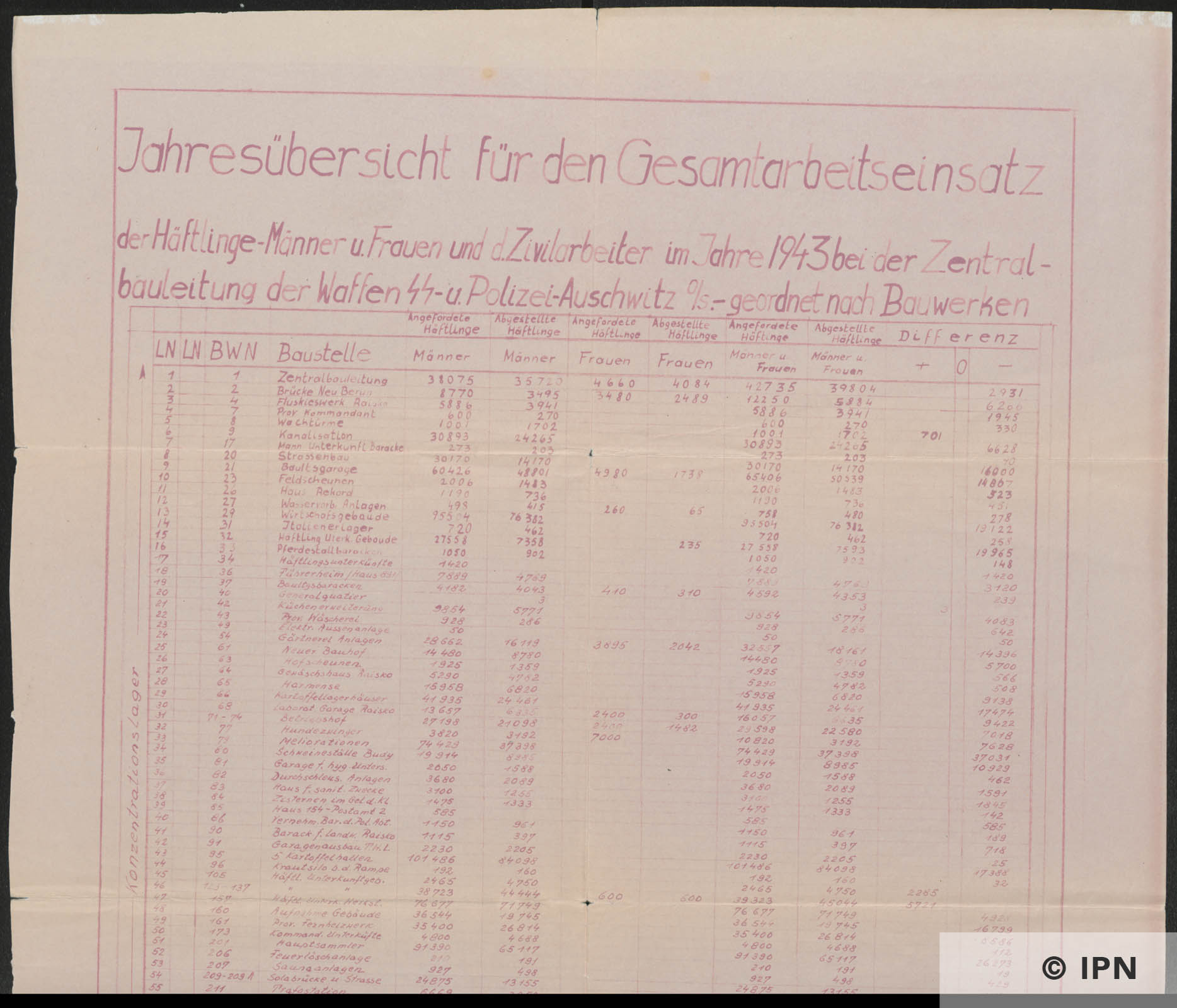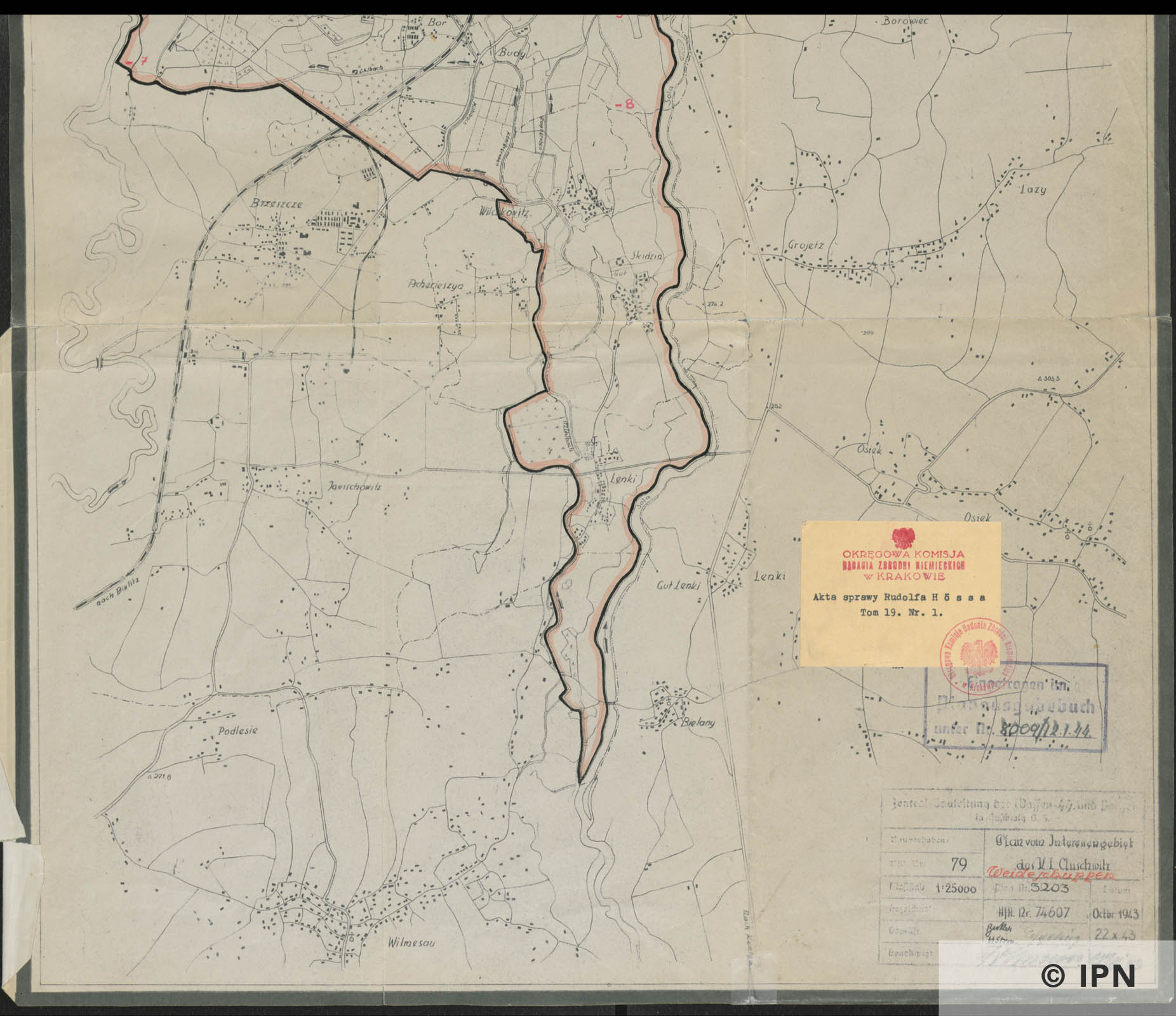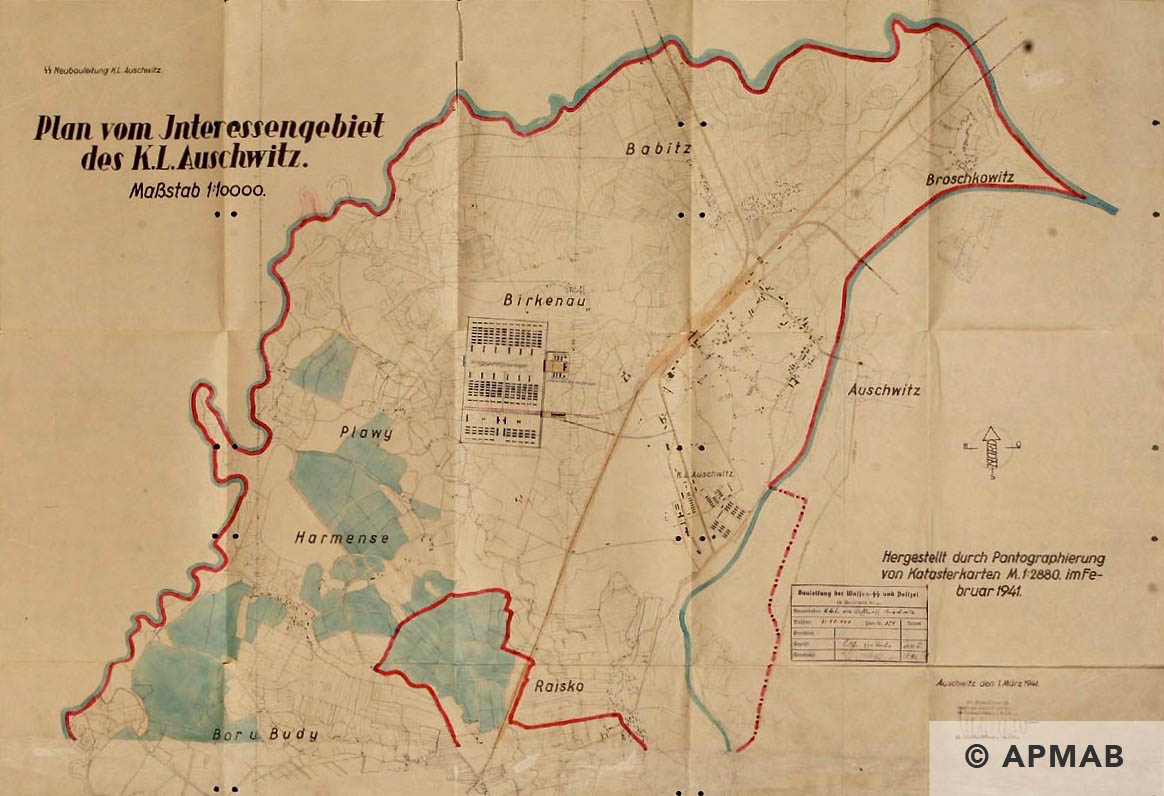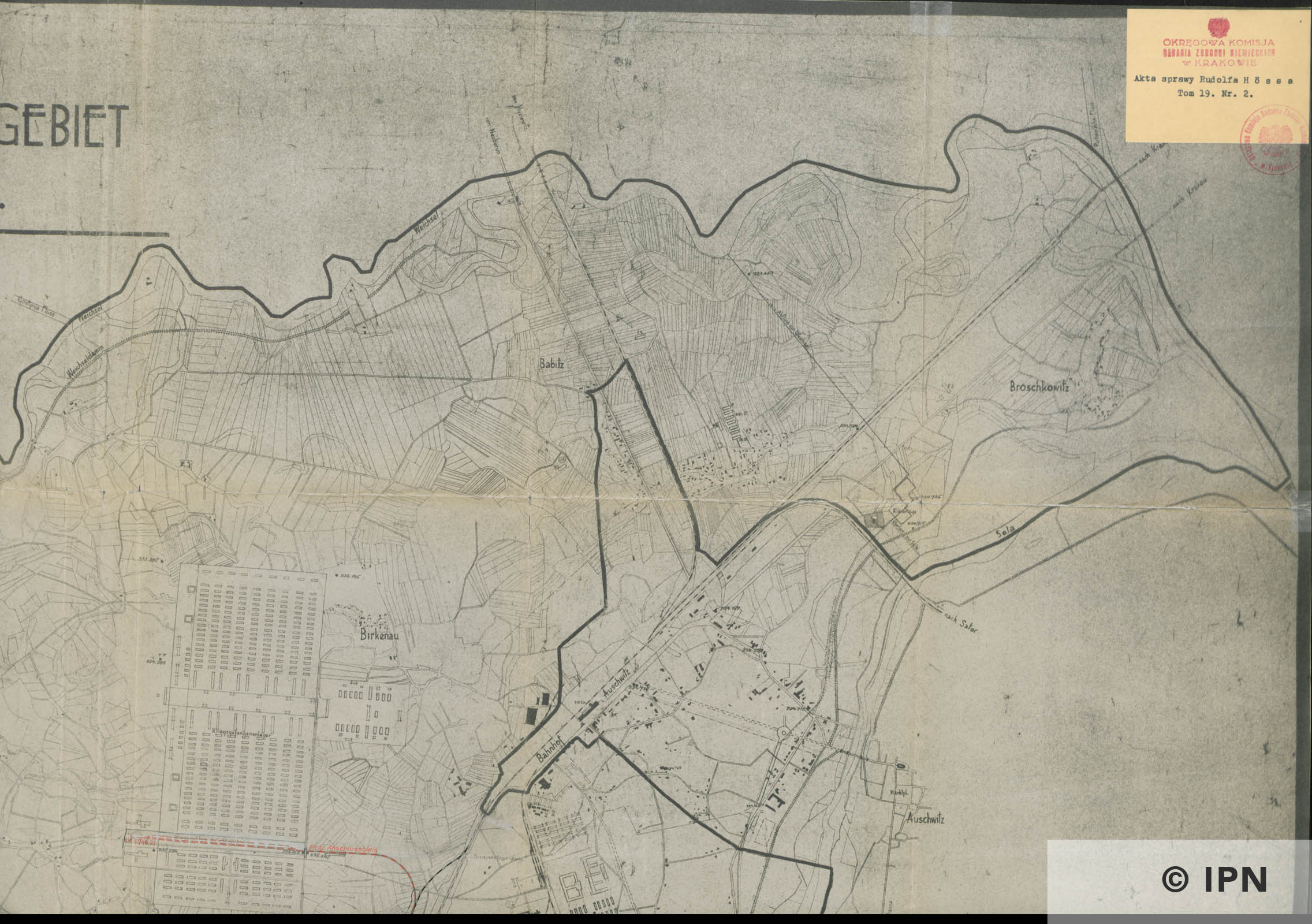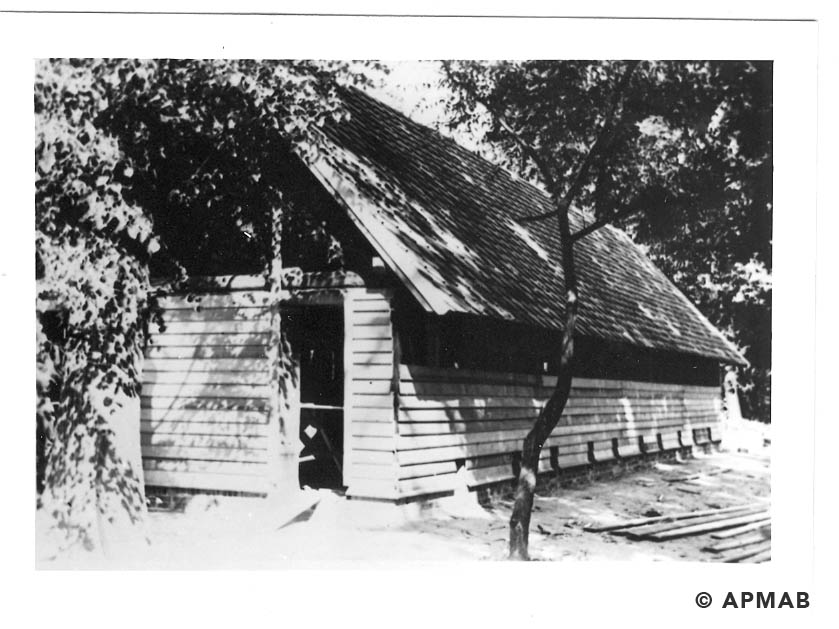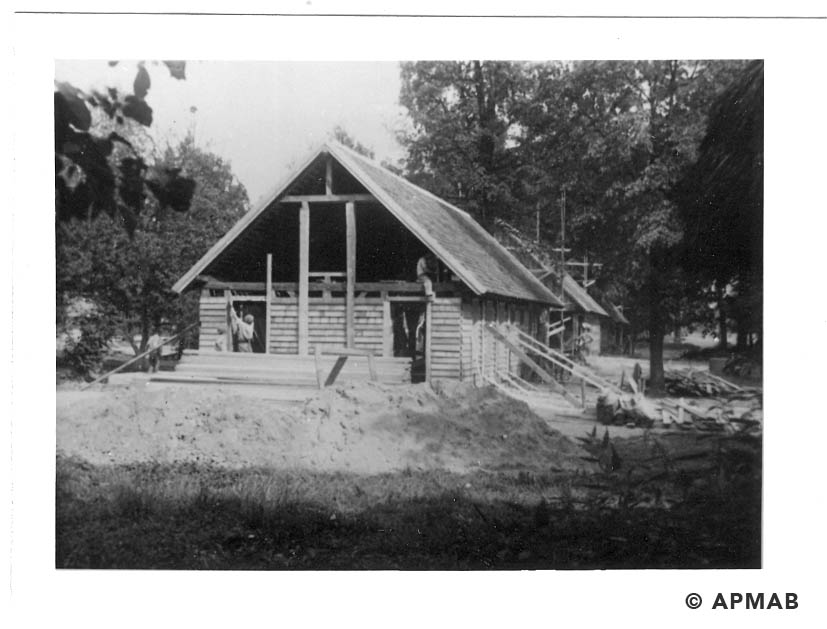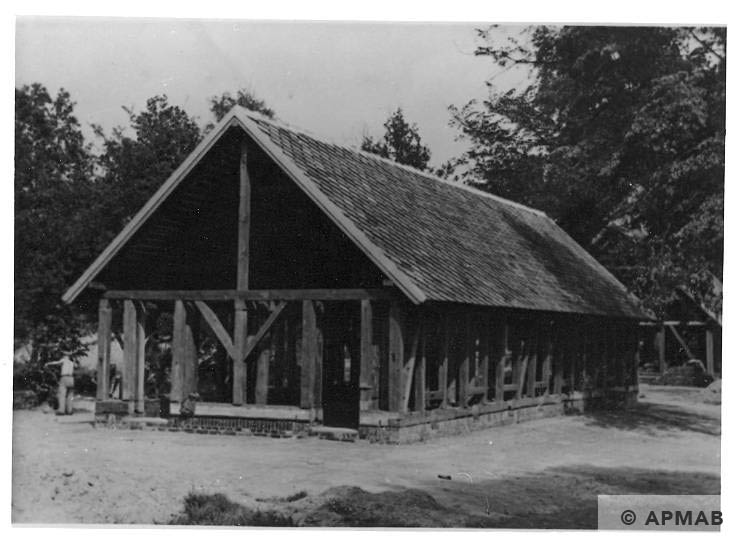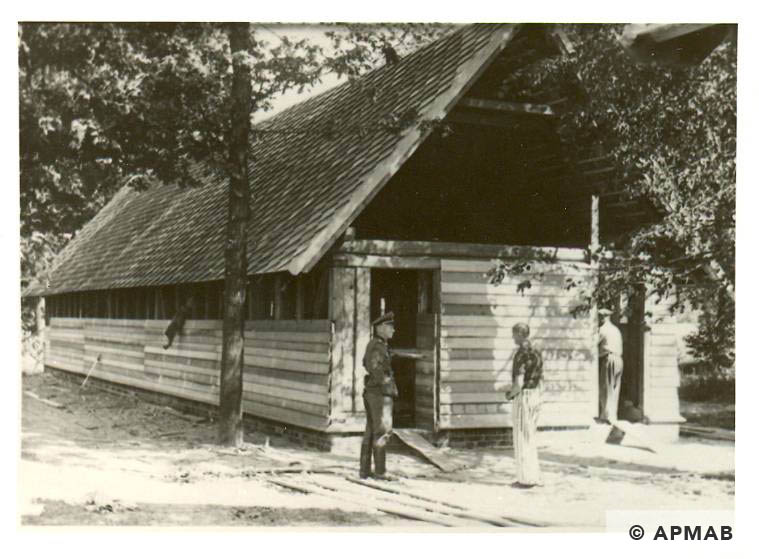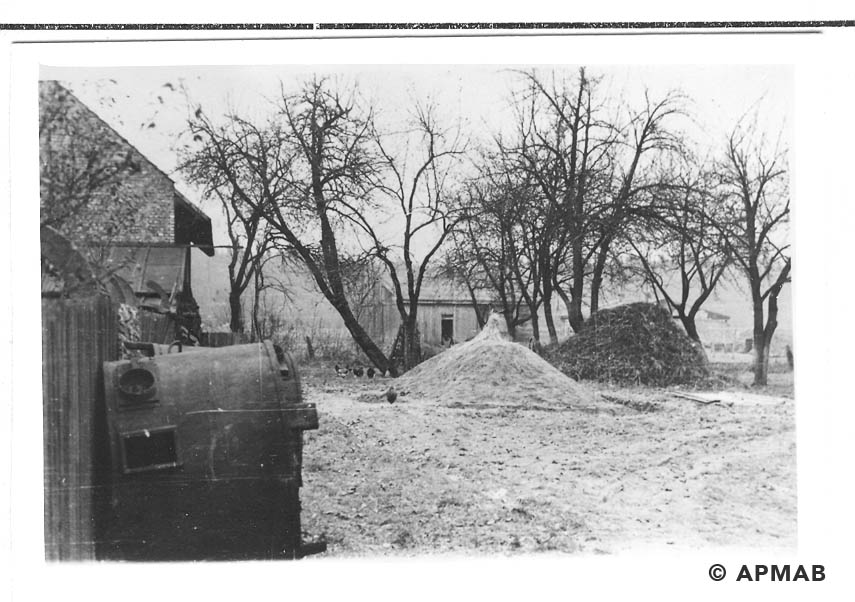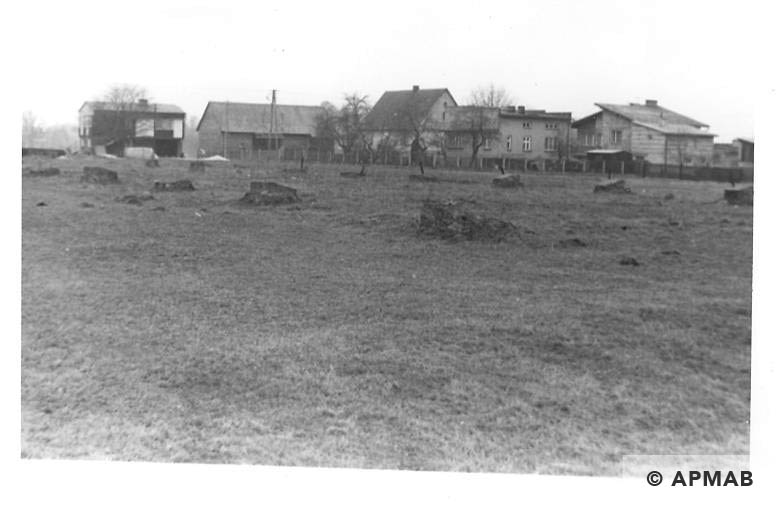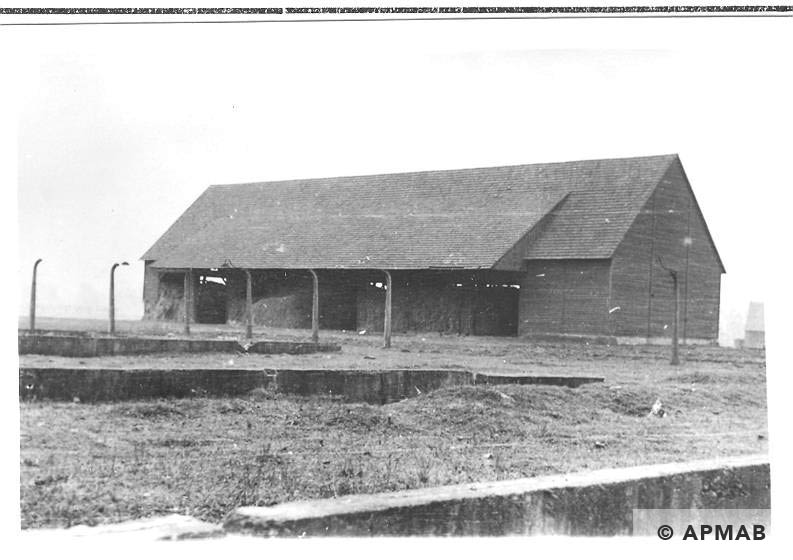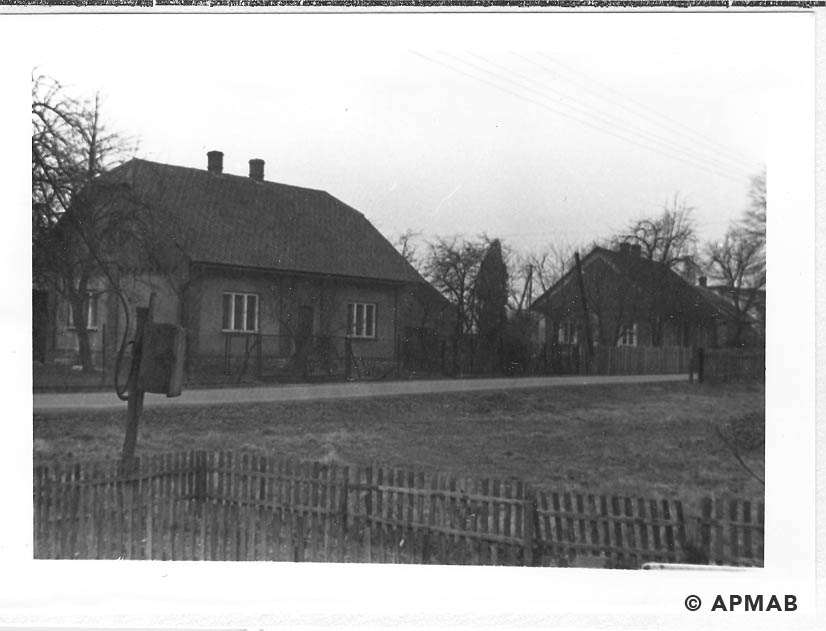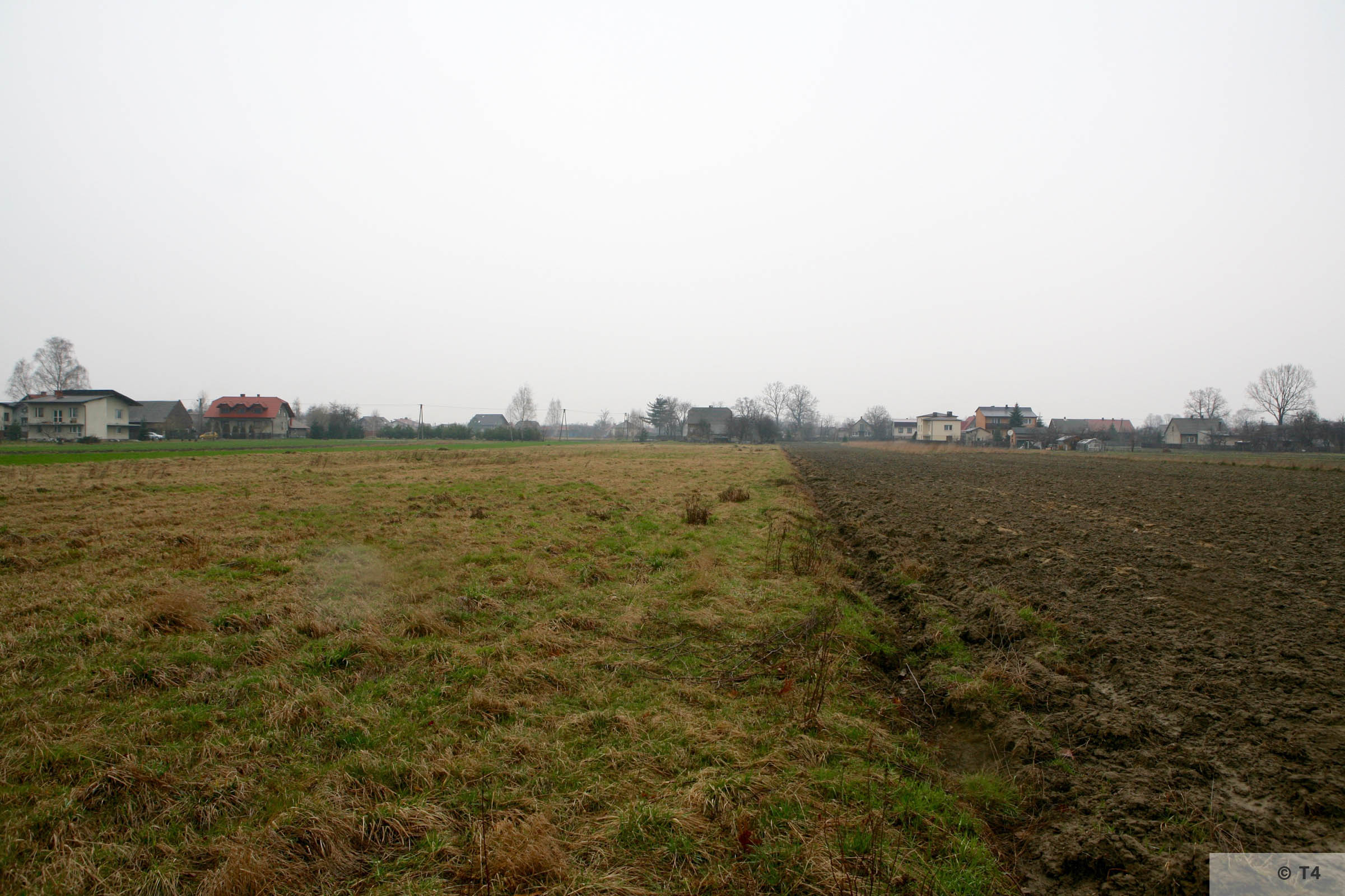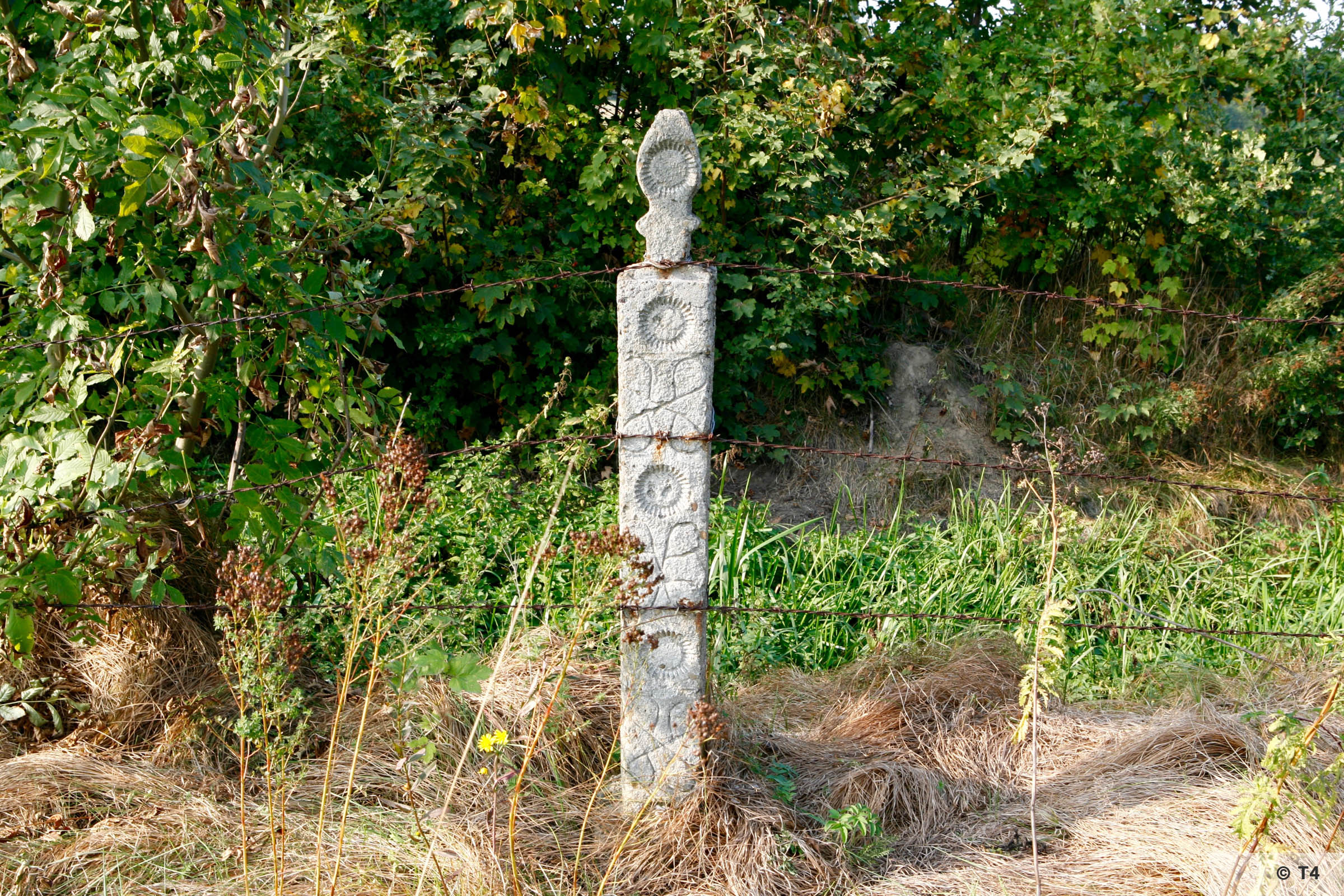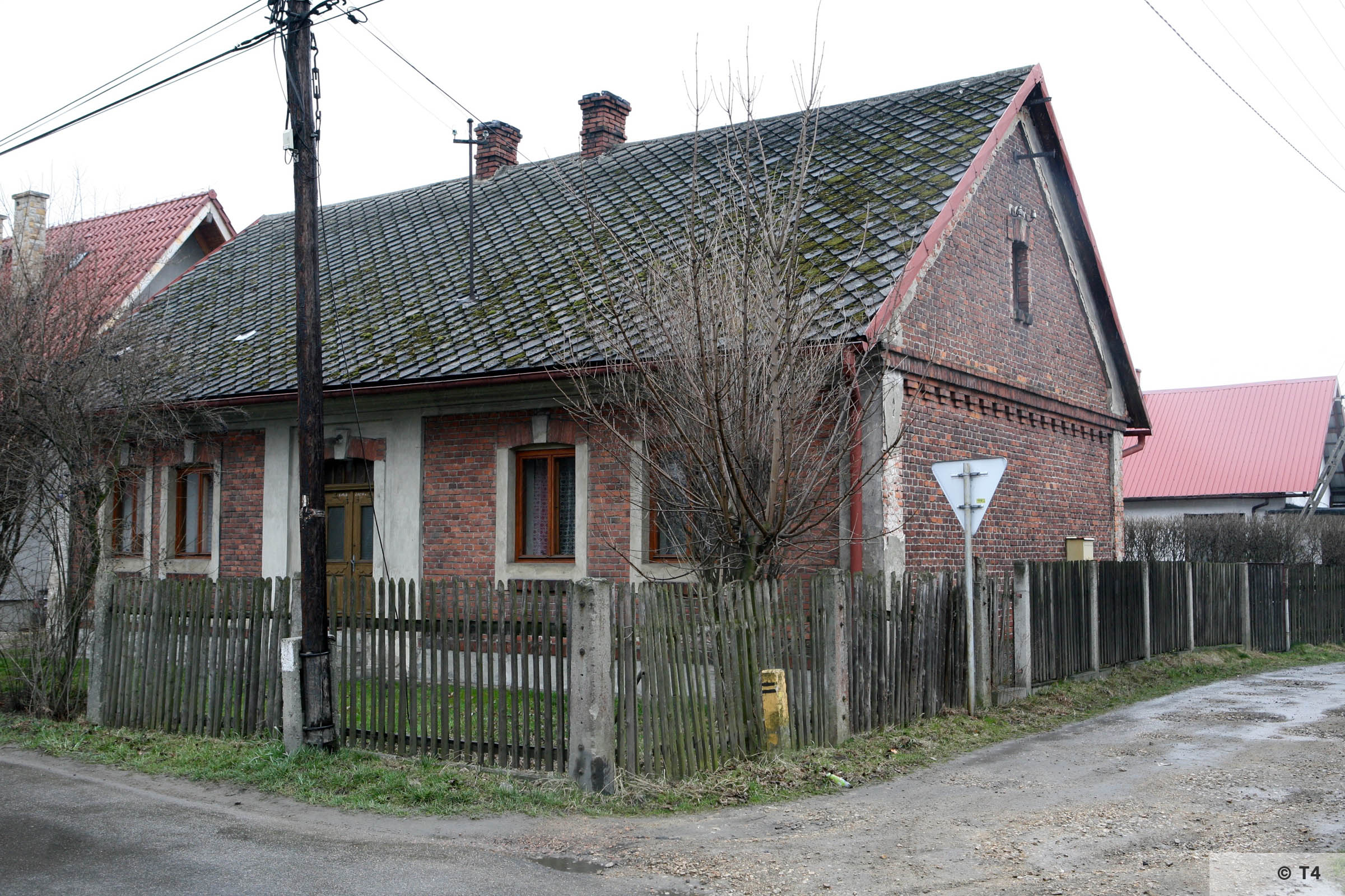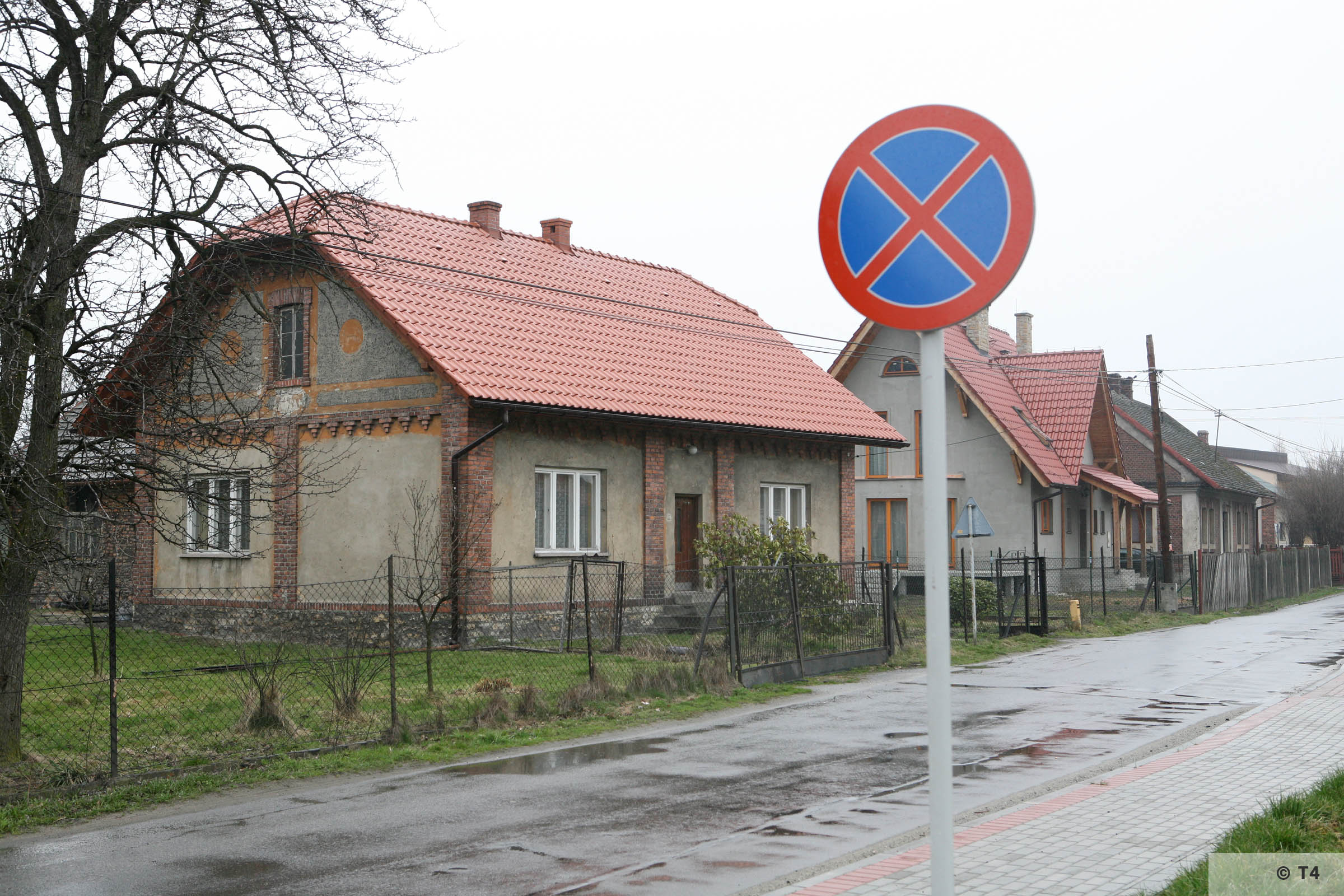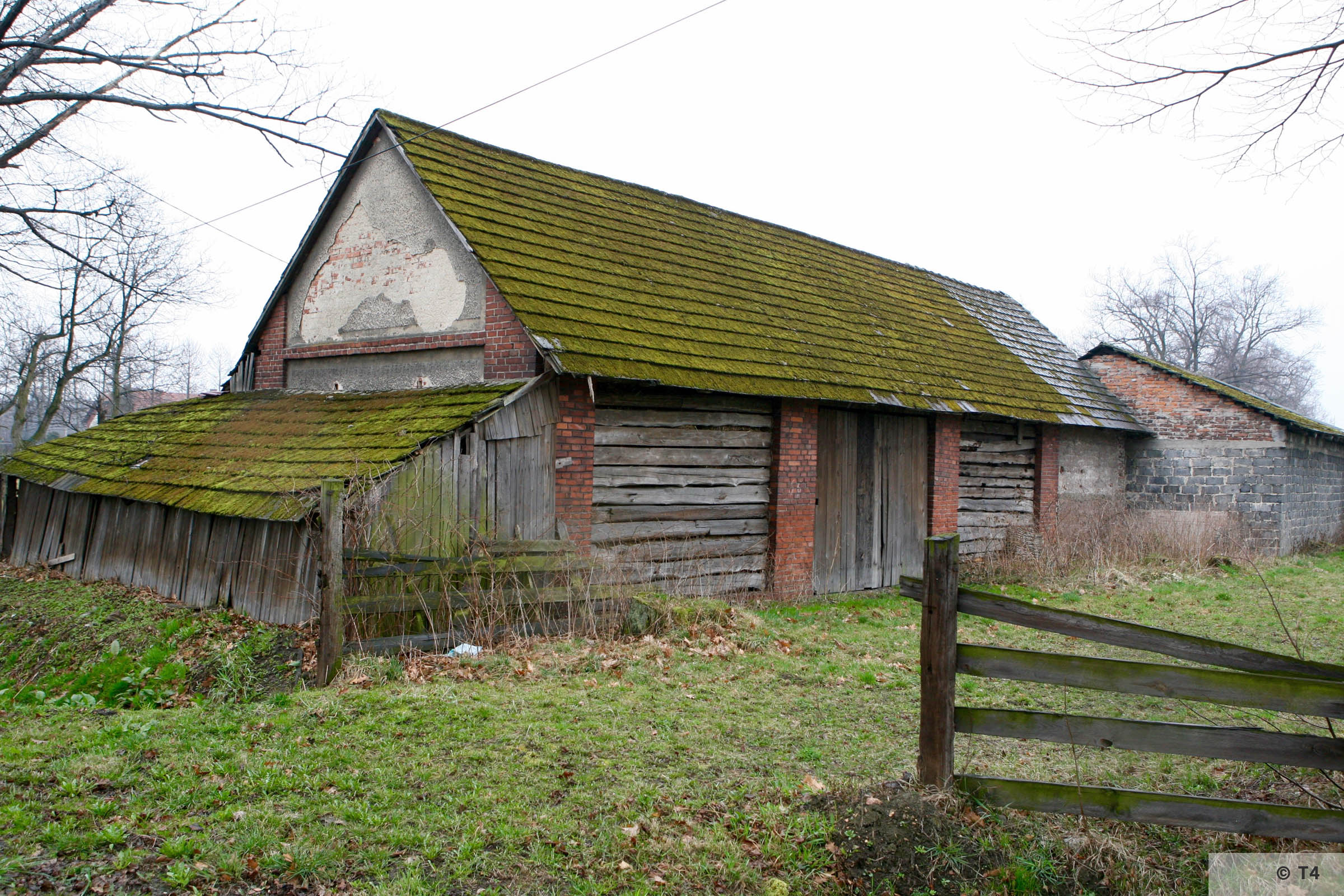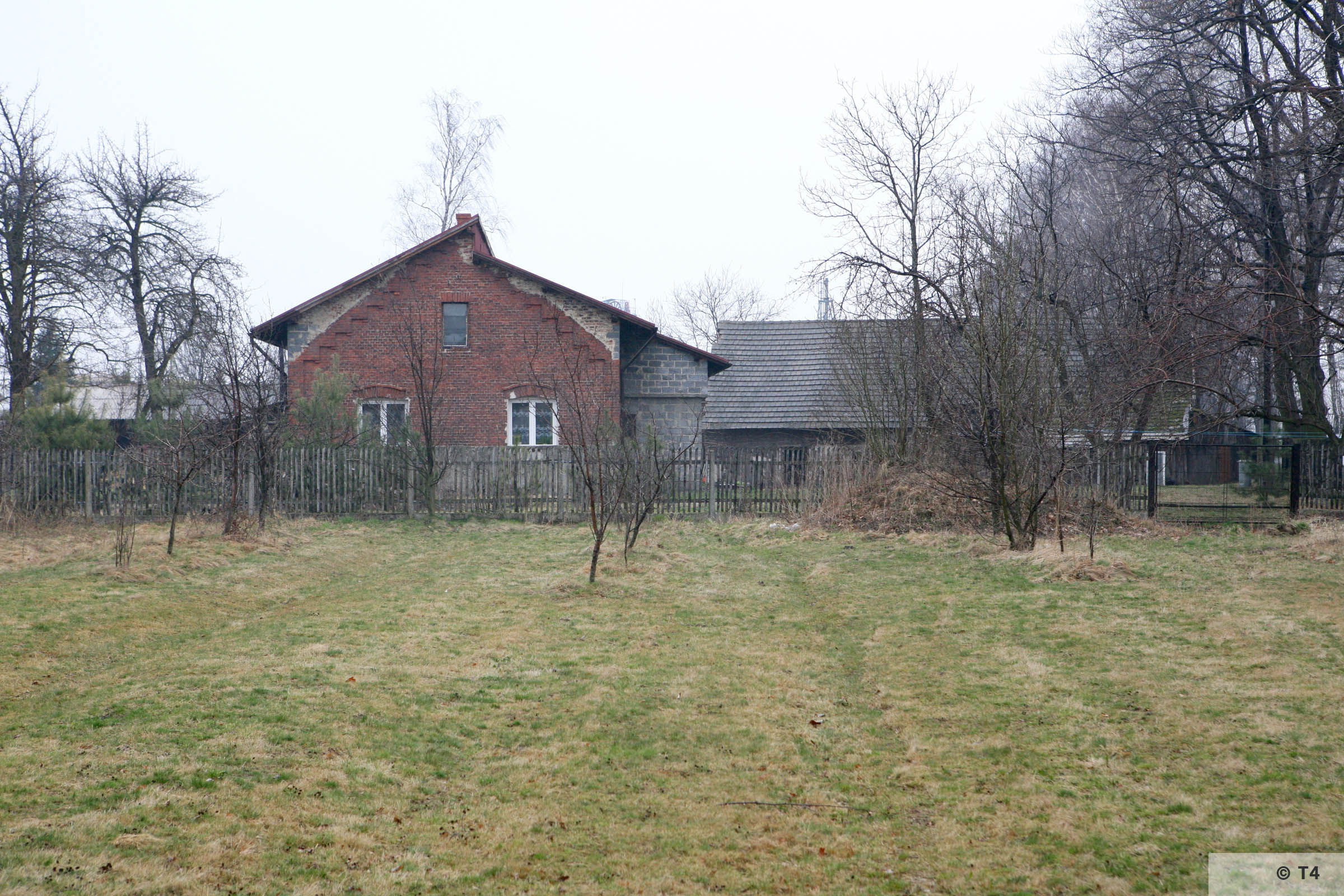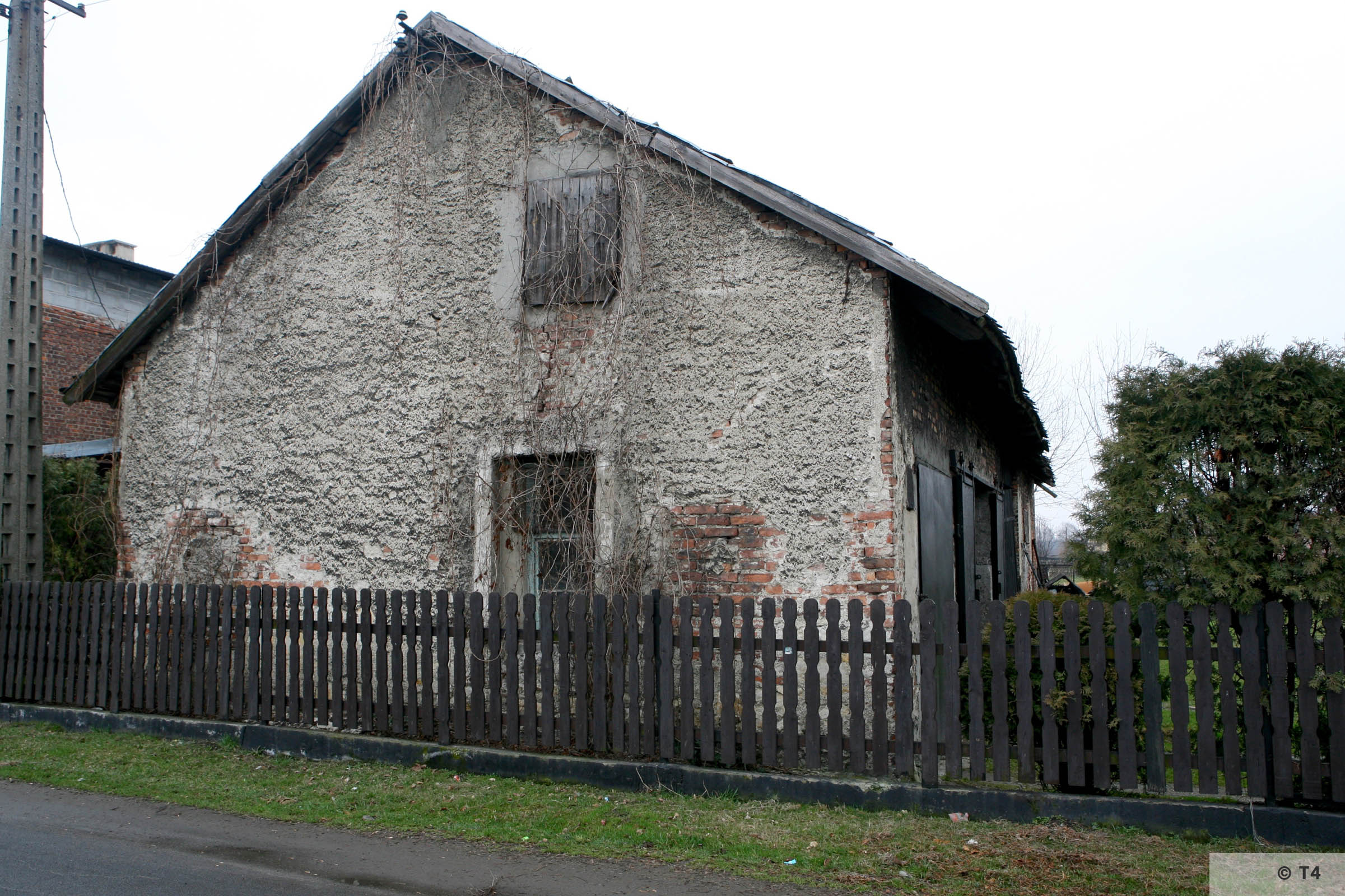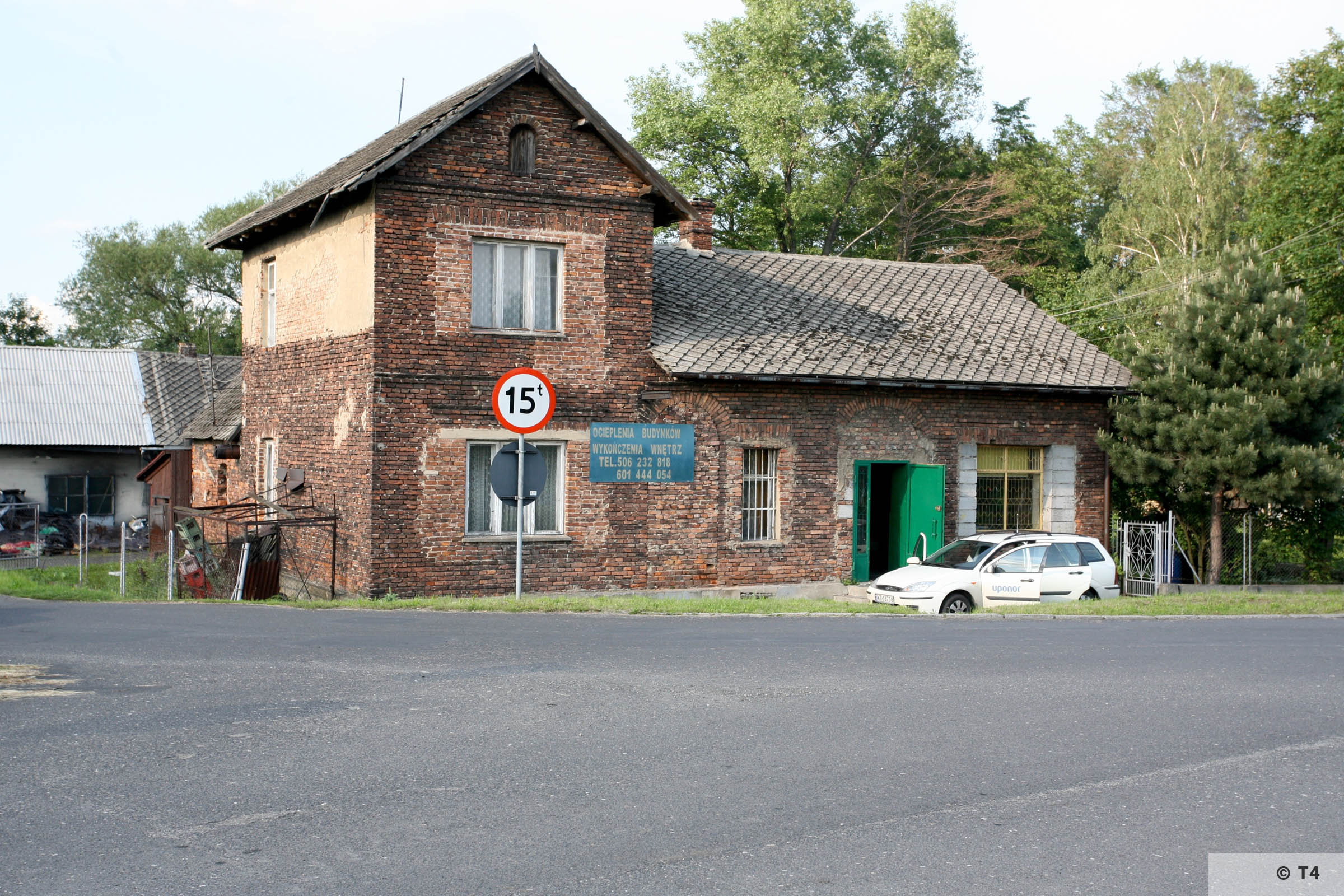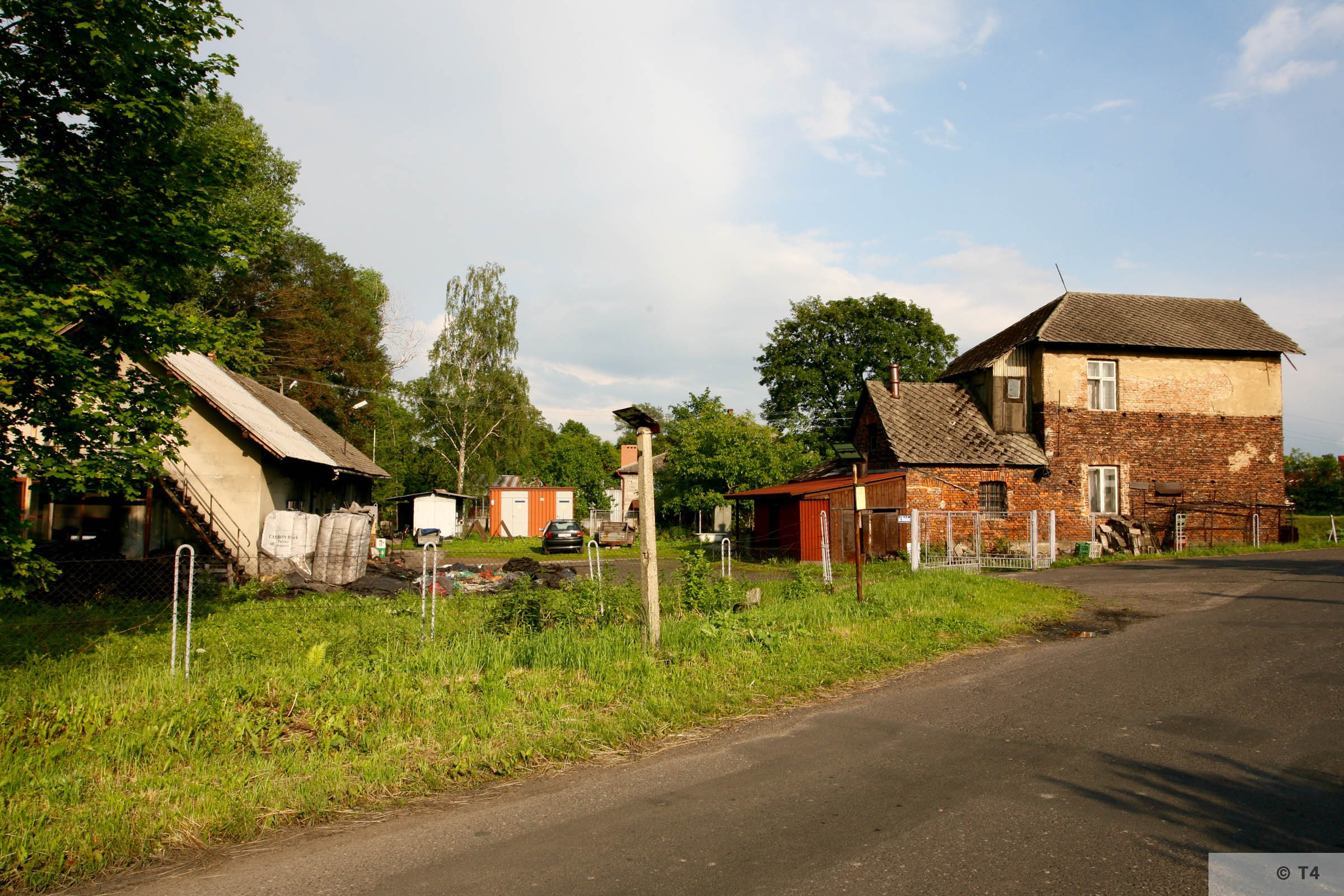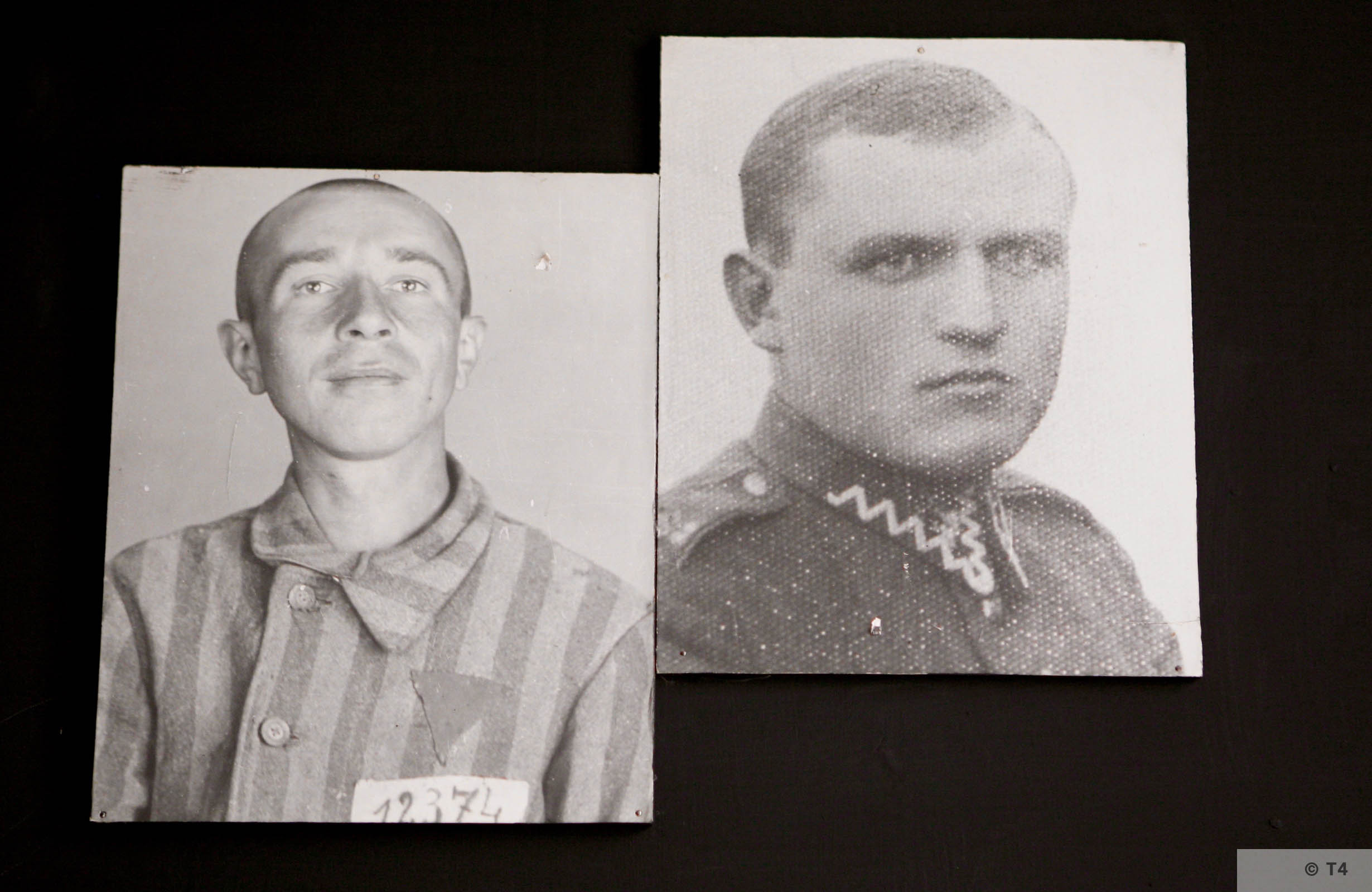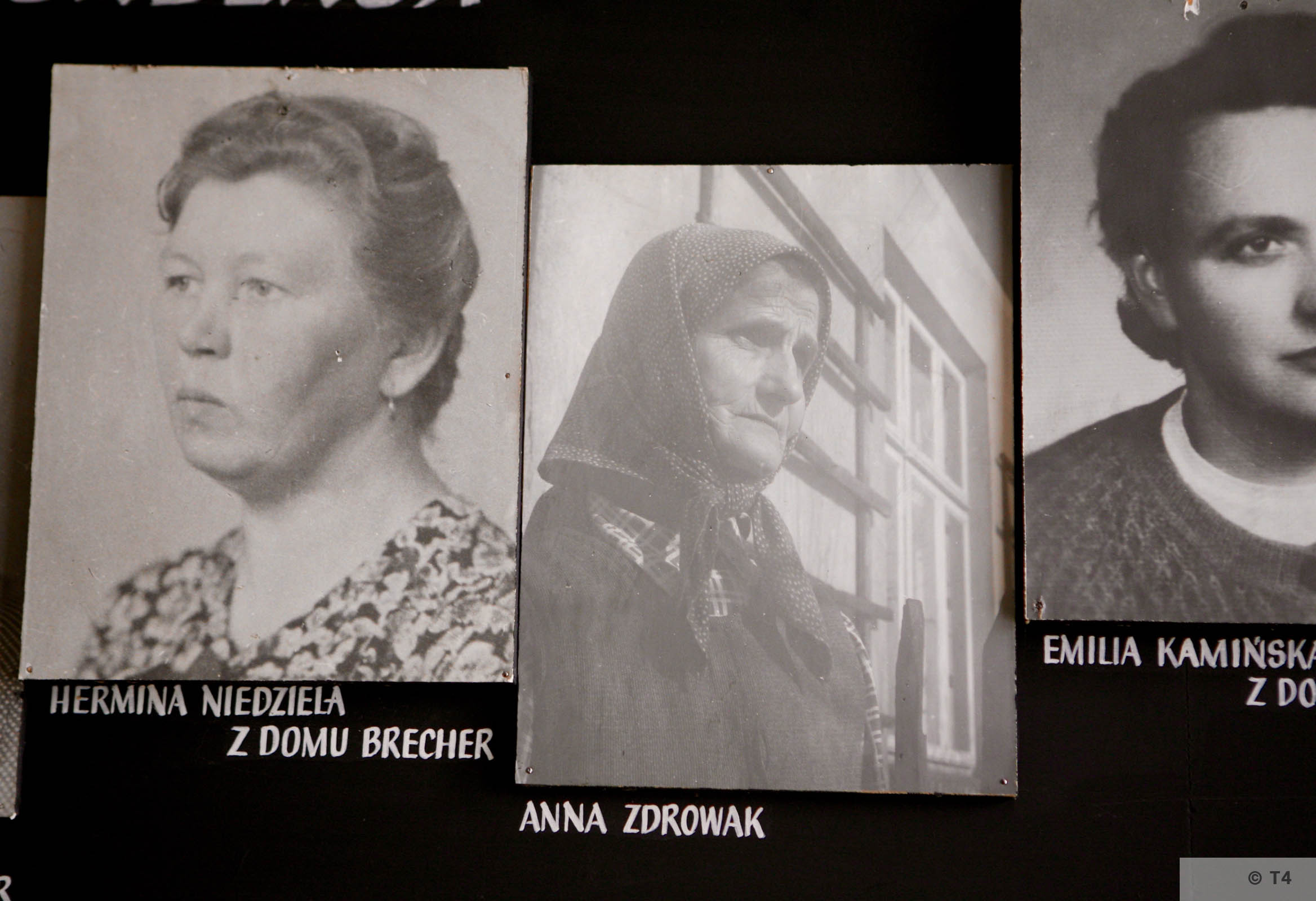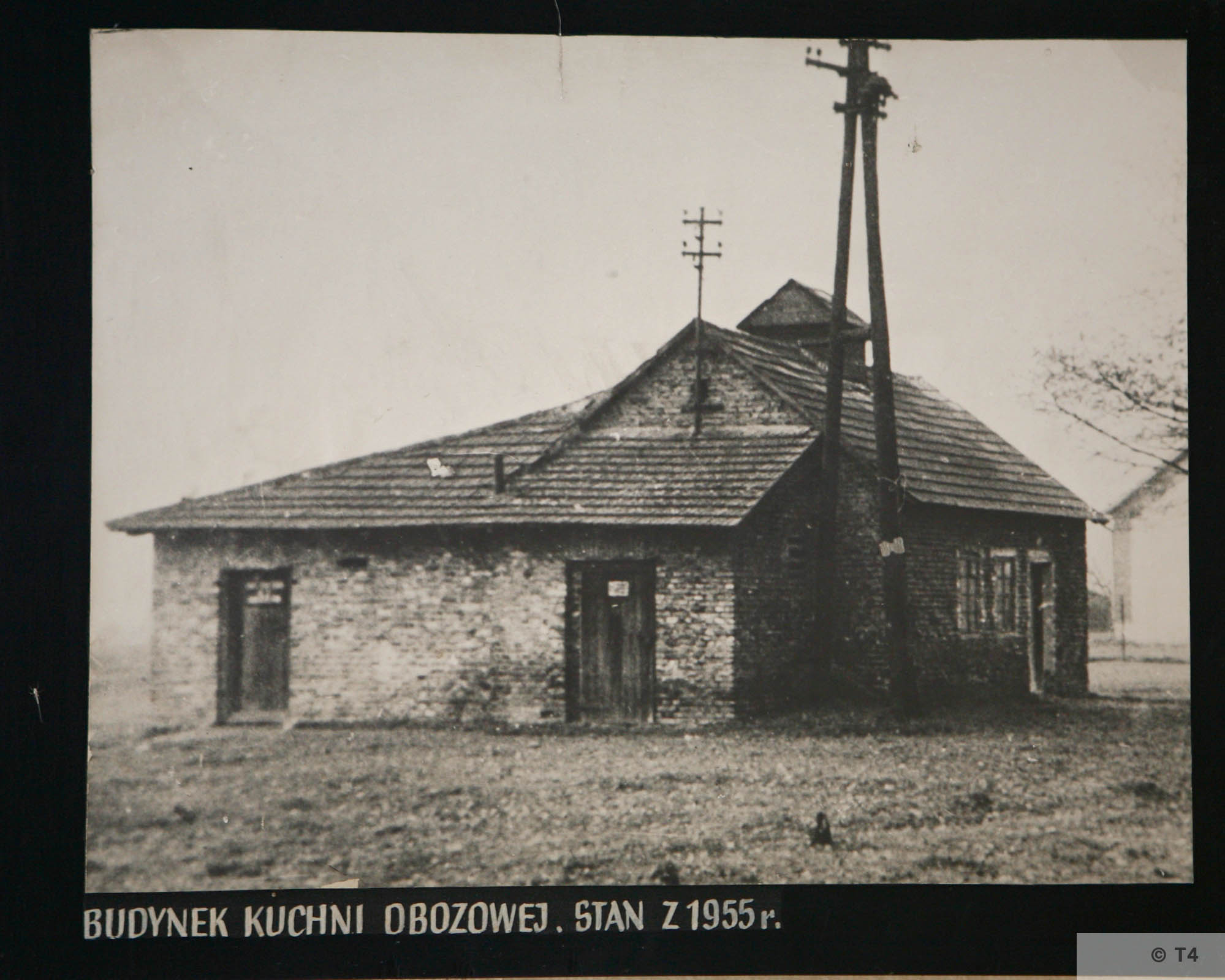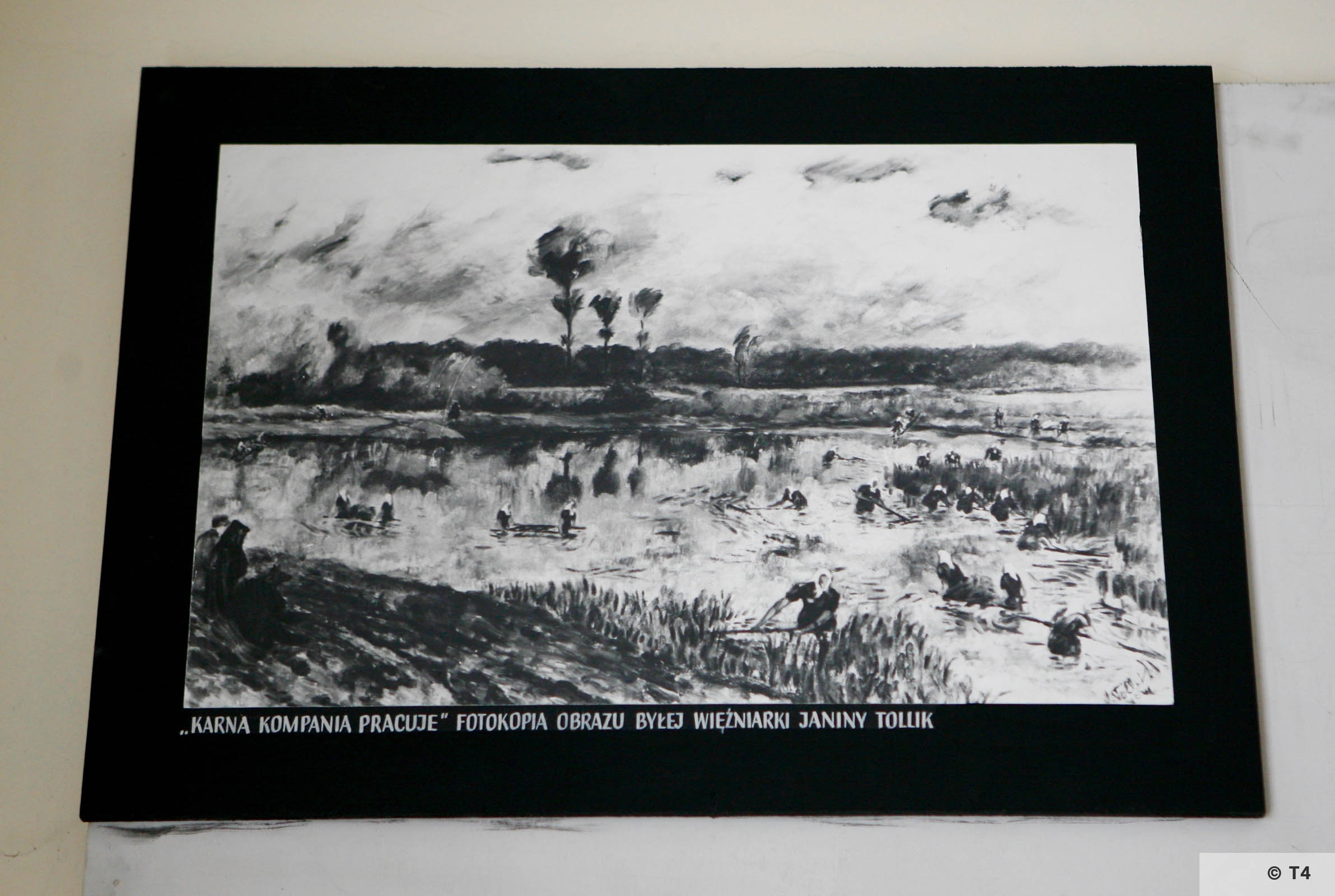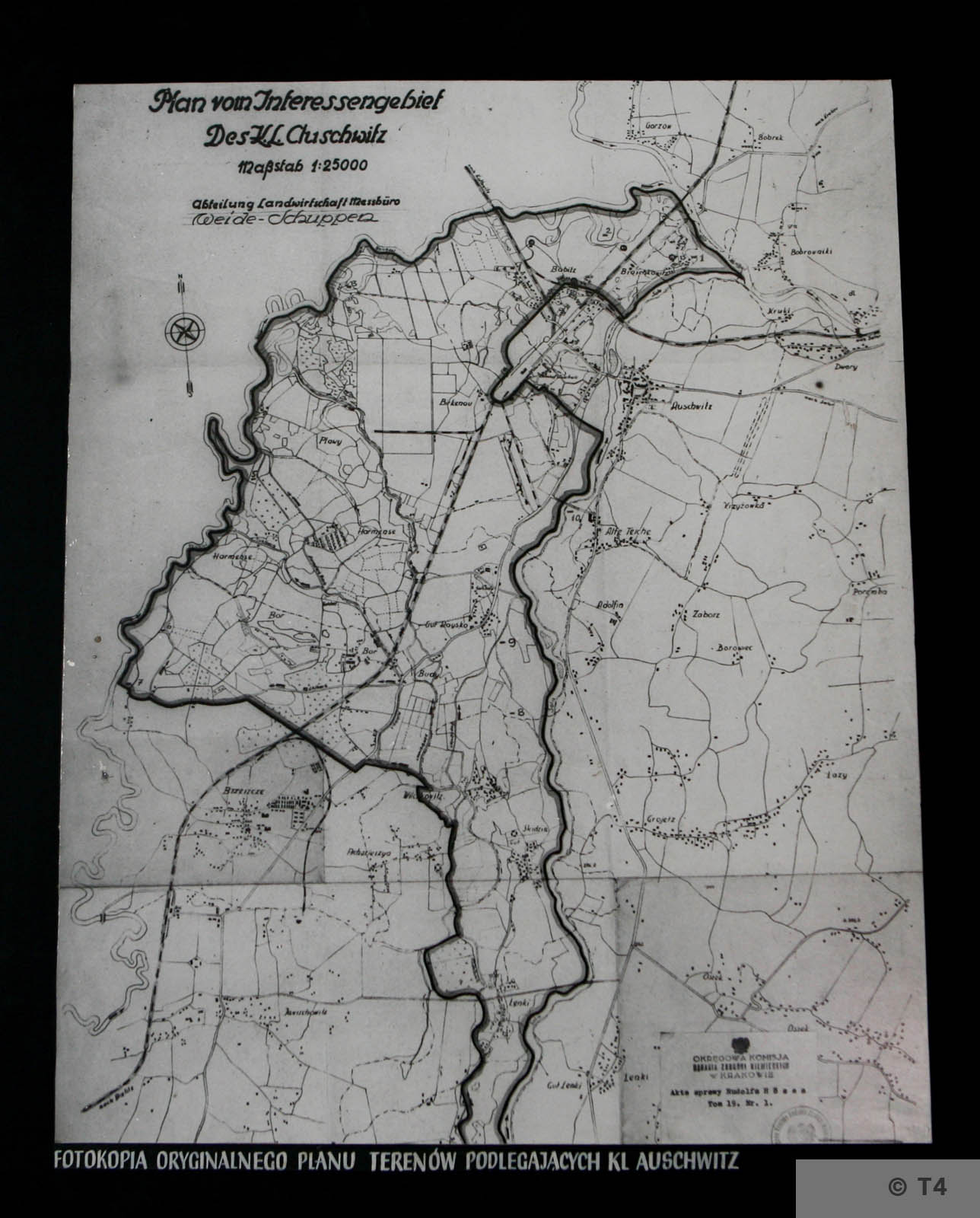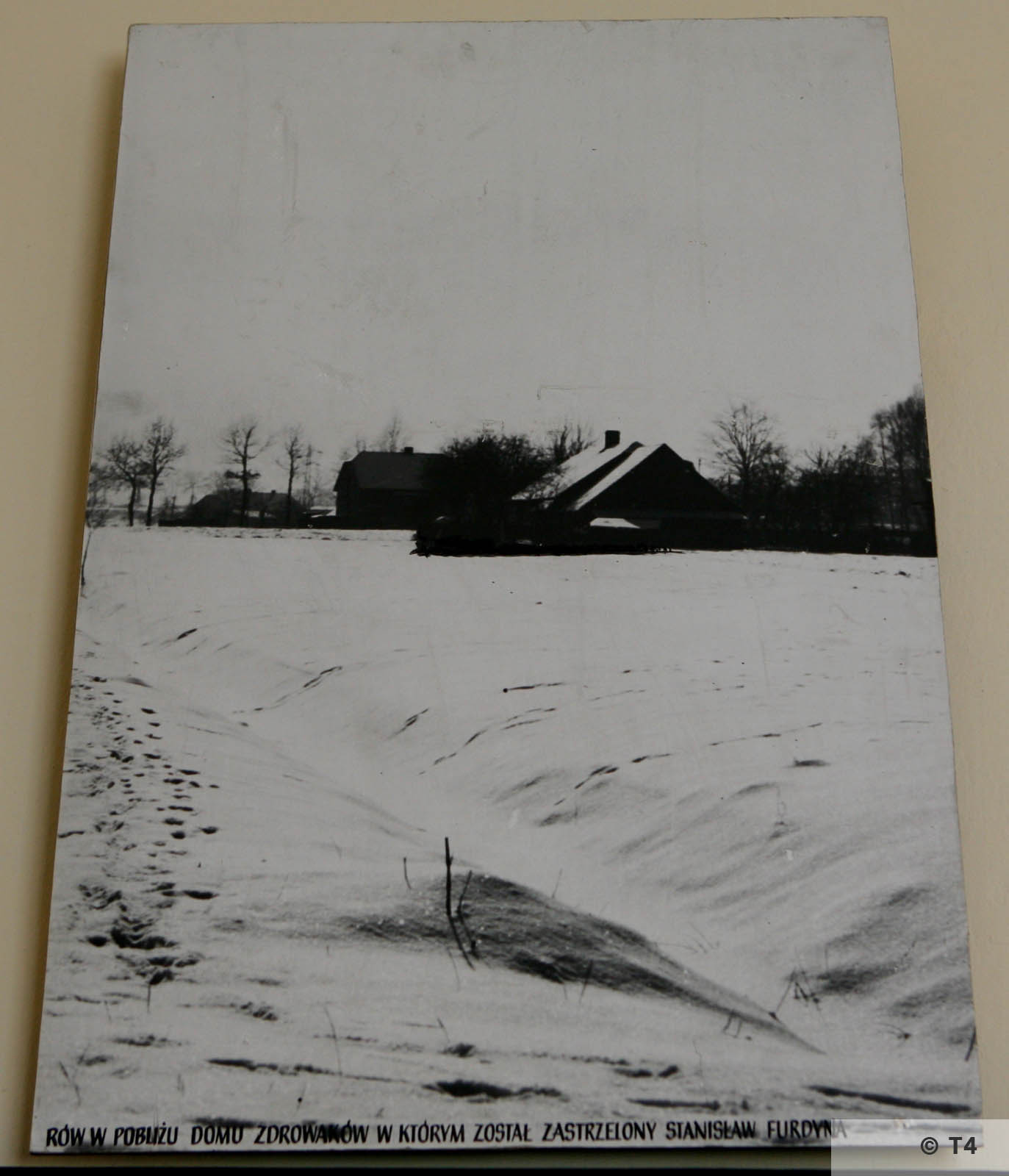Wirtschaftshof Budy Männerlager
Commandant of the camp
SS-Oberscharführer Ötting
SS-Oberscharführer Glaue
SS-Unterscharführer Kurt Weilandt.
Number of SS Guards
30 SS guards from the Landswirtschaftskompanie of the SS-T.-Sturmbann Auschwitz. Predominantly Germans and Volksdeutsche from Hungary, Croatia, Romania and Poland.
Work type
Agriculture: Agricultural labour on an SS farm
Employer
Auschwitz concentration camp until February 1942
Landwirtschaft des Auschwitz O/S from February 1942
SS-WVHA/Amt W V; Land-, Forst- und Fischwirtschaft from February 1942
Sub camp buildings
Wooden barracks built specifically for the sub camp.
Number of prisoners
Between 200 and 400 male prisoners. On 17 January 1945 313.
Nationality of prisoners
Originally Poles, French, Belgians, Czechs and Soviets. Later, gypsies, Jews from Warsaw and Greece.
Period of camp existence
April 1942 – 18 January 1945 (with an interruption in the autumn and winter of 1942/1943).
Dissolution / Evacuation of the sub camp
Evacuation on 18 January 1945. The prisoners from the sub camps of Budy and Birkenau trecked togtheor with equipment from the Wirtschaftshof on horse and carts to the Tatra mountains in Czechoslovakia. What happened to the prisoners after then is unknown.
Dates of site visits by Tiergartenstrasse4 Association
June 2006, September 2006, November 2006, March 2007
Memorialisation
On the Przedszkola Publicznego nr 2 (Public Kindergarten No. 2) a granite plaque with an inscription in Polish was erected in 2003. There is an information board at the entrance to Auschwitz II-Birkenau erected by the Polish population of the former Interessengebiet in April 2001.
Explore more
The History
The history of the companies and the places prisoners worked, the sub camps, the SS guards and memorialisation of the sites.
The History of the Landwirtschaft des Auschwitz O/S
The development of the agricultural economy in the vicinity of the Auschwitz camp, SS-Reichsführer Heinrich Himmler himself had prioritized. He was a farmer by profession, and even before the war had ordered the establishment of concentration camp farms (for example, in Dachau the plantation farming of herbs and also gardening). In November 1940, the Auschwitz camp commandant, Rudolf Höss gave Himmler a verbal report on the development of the Auschwitz concentration camp. He presented all of the difficulties encountered during the establishment of the camp and the further development of the camp. The meeting was also attended by the head of the office, III D (Agriculture, Forestry, Handicrafts), SS-Sturmbannführer Heinrich Vogel. [1] It was known that Himmler did not like to listen to the complaints of his subordinates; Höss mentions in his diary: “Interest by him (Himmler) was increased when I started talking about the entire area and explained the plans he changed immediately. He was greatly interested in the plan and gave instructions one after another and noted down everything that was to be built on the land. Auschwitz is to be the agricultural experimental station for the East. There are opportunities which we have not had yet in Germany. … Every agricultural discipline needed to be there. They are to create branches of the great laboratories for plant breeding. Breeding cattle of all breeds and types is required. Vogel is to immediately source experts. Clean ponds, recover land, and build embankments along the Vistula River (…). In the near future he wants to see everything in Auschwitz. They further discussed their plans for the agricultural area to the smallest detail, until the adjutant on duty told them there were important people, he was to meet who had been waiting for a long time.” [2]
Implementation of these plans gained momentum after the first visit by Himmler to Oświęcim on March 1, 1941. During the visit and inspection of the Auschwitz camp Heinrich Himmler was accompanied by SS officers from the camp but also Gauleiter of Upper Silesia SS-Brigadeführer Fritz Bracht, Obergruppenführer Ernst Schmauser, SS-Oberführer Glücks, leaders from the district and leading representatives of IG Farben. After the visit to the camp and its surrounding Interest Area (Interessengebiet) Himmler ordered Höss as follows: a) expand the Auschwitz camp to a capacity of 30,000 prisoners, b) build in the village of Brzezinka, a second camp for 100,000 prisoners of war, c) support the planned construction of industrial plants on land provided for IG Farben at Dwory near Oświęcim, and provide about 10,000 prisoners, d) develop the whole Interessengebiet, especially for agriculture and livestock.[3]
This area was large, covering about 40 square kilometres and before the war had been partly farmed by Poles. Adverse soil and climatic conditions, made the area ideal for experimenting on improvements in farming techniques that could be used in ecologically fragile areas in the East. A huge advantage of undertaking such a large agricultural experiment in the Auschwitz Interessengebiet was the availability of male and female prisoners from the Auschwitz concentration camp.[4]
In February 1942 a new department named the Landwirtschaft des Auschwitz O/S was created headed by SS-Obersturmbandführer Joachim Caesar.[5] Caesar reported to the head of the newly created SS-WVHA/Amt W V; Land-, Forst- und Fischwirtschaft, SS-Sturmbannführer Heinrich Vogel. Certain day to day administration functions of the farming camps remained with Auschwitz. With the administrative changes in Auschwitz in the Autumn of 1943 the day to day administration of the Interessengebiet came under the authority of Auschwitz II-Birkenau. [6]
The farming camp of Auschwitz had their own guard unit named the Landswirtschaftskompanie of the SS-T.-Sturmbann Auschwitz. The SS guards were assigned from the Landswirtschaftskompanie of the SS-T.-Sturmbann Auschwitz to each individual farm for guard duty. The Landswirtschaftskompanie was made up of men from the 9/ SS-T.-Sturmbann Auschwitz and later the 2.Stabskompanie/ SS-T.-Sturmbann Auschwitz. The first head of the Landswirtschaftskompanie was SS Hauptsturmführer Thomsen. His successor was Hauptsturmführer Ziemssen. Thomsen was the deputy and adjutant to the chief of the Landwirtschaft des Auschwitz O/S, Dr Caeasar. The Spiess of the Landswirtschaftskompanie was SS Hauptsturmführer Becker. The company headquarters of the Landswirtschaftskompanie was at the experimental station in Rajsko. Later it was moved to the SS barracks in Auschwitz I. By the Autumn of 1944 there were approximately 300 men in the Landswirtschaftskompanie. [7] The SS guards were not generally assigned to one of the farm camp permanently but were assigned over time to other farm camps. [8]
Reinhard Thomsen described the creation of Landwirtschaft des Auschwitz O/S and Landswirtschaftskompanie in post war testimony, “ As I came to Auschwitz in May 1940 the camp was still being built up. My task from the beginning and thereafter was to build up the agricultural department and subsequently get the Auschwitz agriculture operational. This seemed necessary in particular because the Poles in the immediate vicinity of the camp were to be resettled and the fields would therefore lie fallow. The idea for setting up a special Landwirtschaftbetriebe of the camp could have come from the commandant Höss, as he was strongly interested in agricultural matters. I sought the workforce for agricultural work first from the Wachkompanien. At the beginning under my leadership were only SS. After, sometime, in the spring or summer of 1941 my department was given prisoners for use as workers. The entire area was split up into departments:
- Poultry farm (Harmense)
- Fish Farming (also in Harmense)
- A forest department
- A sheep farm (but after a short time this was closed as it did not pay)
- A nursery (Rajsko)
- A tree nursery
- Three agricultural areas (Budy, Broszkowitz)[9]
- A plant research station (in Rajsko. This was set up as a kind of secret department under Dr Caesar)
The prisoners that worked for the different agricultural departments were at first brought from the Auschwitz main camp to their workplace and in the evening brought back. When in early 1942 Dr. Caesar came to Auschwitz and took over the leadership of the agricultural department the prisoners assigned to agricultural work were withdrawn and were brought to barracks at their workplace.” [10]
From the 7th April 1941 to 12th April 1941 (and in the case of Pławy 8 March 1941) the Germans resettled the population from the villages in the Interessensgebiet that were to be used as farms: Babice (in German Babitz), Brzezinka (in German Birkenau), Harmęże (in German Harmense), Rajsko (In German Raisko) and Pławy (In German Plawy).[11]
In April 1941 the Germans deported the inhabitants of the two hamlets Bór and Budy. Budy encompassed an area of 70 hectares and there were 30 buildings. Bór comprised 260 hectares and 70 buildings. This area belonged administratively to the municipality Brzeszcze. [12]
Residents were only able to take their movable property, excluding farm machinery and tools, and were transported to the train station at Oświęcim where they were sent to the General Government. The cattle and farm equipment were taken over by the Auschwitz concentration camp. Only a few people – mostly railroad workers and miners – were allowed to live in the neighbouring villages.
Then the Abbruchkommando was sent in to demolish the abandoned houses and farm buildings. Overall about 80% of the buildings in Bór and Budy were demolished. Most of the demolition material was transported to the village of Harmęże, where it was used to build hen houses, while the debris was used in Budy for the foundations of the future subcamp barracks. Wooden parts were used to build barns and guard towers.
[1] Piper, Franciszek, Zatrudnienie więźniów KL Auschwitz, Oświęcim 1981, p. 188-189.
[2] Autobiografia Rudolfa Hössa, komendanta obozu oświęcimskiego, Warszawa 1989, p. 274.
[3] Czech, Danuta, Kalendarz wydarzeń w KL Auschwitz, Oświęcim 1992, p. 52.
[4] Lasik, Aleksander, Struktura organizacyjna obozu [in:] Auschwitz 1940-1945. Węzłowe zagadnienia z dziejów obozu, Vol. I: Założenie i organizacja obozu, Edit. Wacław Długoborski, Franciszek Piper, Oświęcim 1995, p. 213.
[5] Joachim Caesar, SS-Obersturmbannführer, born. May 30, 1901 in Boppard, Doctor of Agricultural Sciences, a member of the NSDAP from 1 September 1931 (No Party: 626,589) and the Allgemeine-SS from 27 June 1933 (Registration No: 74704), to 1 April 1937 was an officer of the Central Office Affairs of the SS Race and Settlement (SS-Rasse-und Siedlungshauptamt, R.u.SHA). From 2 August 1941, employed in the Training Department of the Waffen-SS (Schulungsamt der Waffen-SS), where he was seconded to the Office of Human Resources Recruitment Agency of the Waffen-SS (Ergänzungsamt der Waffen-SS). From 16 February 1942, he was an SS officer in the WVHA assigned as manager of the farms in Auschwitz. From: BDC, personal file of Joachim Caesar.
[6] StA Ludwigsburg StAL EL 317 VI_Bu 881, p. 36-38.
[7] StA Ludwigsburg StAL EL 317 VI_Bu 881, p. 29.
[8] StA Ludwigsburg StAL EL 317 VI_Bu 884, p.555. Testimony of Josef Gaschler.
[9] Budy, Plawy and Birkenau.
[10] StA Ludwigsburg StAL EL 317 VI_Bu 885. Testimony of Reinhard Thomsen 15 March 1962.
[11] StA Ludwigsburg StAL EL 317 VI_Bu 881, p. 26.
[12] StA Ludwigsburg StAL EL 317 VI_Bu 881, p. 26.
The History of the Sub Camp Wirtschaftshof Budy Männerlager
The sub camp for male prisoners in Budy was established on land situated in the centre of Budy belonging to the displaced Pole Wincenty Moroń. Originally the Auschwitz prisoners who worked on the farm in Budy were an Aussenkommando. The prisoners were brought each day to work and then returned in the evening to the main camp.
After several months, in April 1942 it was decided due to the length of time to march to Budy and back again from Auschwitz-Birkenau, to accommodate the prisoners in one of the three wooden huts, built earlier by workers of a civilian Baukommando. [1]
For several months about 40 Auschwitz prisoners were housed in the barracks but they were then transferred back to Auschwitz. In their stead came civilian workers from Yugoslavia. It soon became clear that the work of the civilians was inefficient and therefore the decision was made to build a permanent Auschwitz sub camp in Budy.[2]
The Auschwitz prisoners in Budy were involved in cultivating about 270 hectares of land and cattle and pigs. In the initial period they also built additional farm buildings.
The male sub camp Budy was surrounded by a single row of concrete posts on which was hung electrified barbed wire.
The sub camp was divided into two sections: an area for prisoners and a farm area. The section which accommodated the prisoners was originally one barrack, but with the expansion of the sub camp there were now two wooden barracks (map reference I I and II) and one barrack in which the farming tools were stored (map reference I 16). This section was further separated by barbed wire fence. Prisoners were able to leave this zone but only to go to the farm inside the sub camp.
In the farm area of the sub camp there were several barracks, most of which were stables for horses (map reference I 1,2), cattle (map reference I 3-7). Another building housed a blacksmith’s shop (map reference I 14).
In addition, next to the sub camp fence stood three barns, two smaller ones (map references I 8,9) which housed sheep were at the fence along ul Grzybowa, and a third large (50 m long and 16 meters wide) (map reference I 20) was built next to the fence of the sub camp in which fertilizer was stored. A concrete silo with a diameter of 6m and a height of 11 m (map reference I 19) was also built by prisoners.
The male sub camp in Budy had two entrances located at the corners of the fence that runs along ul Grzybowa (from the railway, the so-called. Bagienko).
The SS guards of the sub camp in Budy lived in two houses located on the corner of ul Borowa and ul Bór, (map reference I A,B) and a barn converted to accommodation for the SS (in mid-1944).
Beyond the camp fence there were several buildings such as pigsties (map reference I 10-13). At the corner of ul Bór and ul Odległa in an abandoned house a drug store and dentist surgery were set up. (map reference I III). The dentist surgery serviced not only male and female prisoners from the sub camp in Budy, but also from the nearby sub camps in Pławy, Harmęże and Rajsko.
The male camp in Budy was surrounded by 10 guard towers, simple structures built of wood. They surrounded not only the male sub camp at Budy, but also part of the female camp. SS guards were on duty in the camp during the day. In addition, the SS guards patrolled the path along the fence of the camp, both day and night. [3]
The prisoners were divided into work Kommandos including: Fischkommando, Stallkommando, Grabenbaukommando, Hofkommando, Forstbaumschule. Prisoners were not assigned permanently to one of these Kommandos but could be reassigned on almost a daily basis. [4]
Originally the prisoners were mostly Poles, French, Belgians, Czechs and Soviets. Later Roma, and Jews from Warsaw and Greece. [5]
The conditions under which prisoners lived in Budy did not specially differ from those in the main camps of Auschwitz. The barracks had no ceilings, and in winter were heated by small stoves. Inside the barrack was a large room, in which were arranged three-tiered bunks with mattresses and blankets. In each of the two barracks were also two smaller rooms an infirmary and latrines.[6] In addition to the prisoners working in Budy, housed in the two barracks of the Budy sub camp were Auschwitz prisoners who worked with the chickens in Harmęże and with the fish in Plawy, and also the prisoners of the Waldkommando. [7]
Meals for prisoners were brought daily from Auschwitz-Birkenau. It was packed in the evening and issued the following day.
Most of the prisoners were dressed in normal striped prisoner uniforms. Others wore civilian clothes with squares sewn on their backs painted with stripes or made from the standard striped camp uniform.
The number of male prisoners in the male sub camp in Budy fluctuated between 200 and 400 prisoners. The number of prisoners on 17th January 1945 at the date of evacuation was 313.[8]
[1] Zięba, Anna, Wirtschaftshof Budy, [in:] Zeszyty Oświęcimskie [1967] Nr 10, p. 84.
[2] Zięba, Anna, Wirtschaftshof Budy, [in:] Zeszyty Oświęcimskie [1967] Nr 10, p. 84.
[3] Description of the camp based on: Anna Zięba, Wirtschaftshof Budy, [in:] Zeszyty Oświęcimskie [1967] Nr 10, p. 83-95, APMAB. Zespół Oświadczenia and inspections by Tiergartenstrasse4Association between 2006-2008.
[4] StA Ludwigsburg StAL EL 317 VI_Bu 883, p. 380. Testimony of David Neumann.
[5] Zięba, Anna, Wirtschaftshof Budy, [in:] Zeszyty Oświęcimskie [1967] Nr 10, p. 86.
[6] StA Ludwigsburg StAL EL 317 VI_Bu 882, p. 176. Testimony of Jozef Warchal.
[7] StA Ludwigsburg StAL EL 317 VI_Bu 882, p. 176. Testimony of Jozef Warchal.
[8] Testimony of former Auschwitz prisoner Otto Wolken. Testimony viewed 10 August 2019. https://www.zapisyterroru.pl/dlibra/publication/3755/edition/3736/content8.
Literature:
Zięba, Anna, Wirtschaftshof Budy, [in:] Zeszyty Oświęcimskie [1967] Nr 10, p. 83-95.
The SS Guard Unit
The first Lagerführer in the Wirtschafsthof Budy was Oberscharführer Ötting. He was succeeded by Oberscharführer Glaue. In October, Glaue was succeeded by Unterscharführer Kurt Weilandt. The guard unit was made up of approximately 30 SS men from the Landswirtschaftskompanie. Many of the SS lived in houses next to the sub camp. Others lived in the main barracks in Auschwitz and were transported daily to Budy. [1]
The leader of the Stallkommandos was Unterscharführer Quade, nicknamed “La Pipa” by the prisoners. The leader of the Wald and Fisherei Kommandos was Unterscharführer Weiss. The leader of the Forstbaumschule Budy was Unterscharführer Johannes Reimers. Werner Schnell was responsible for the guard posts. [2]
One of the prisoners in the Budy Aussenkommando, Jan Klis testified to the brutality of the SS guards, “The then commandant of work groups in Budy, SS-Oberscharführer Glaue, assigned Willy Büllow as commandant of the guards who guarded the work group where he wanted to obtain the highest possible work efficiency. In addition to a rifle, Büllow would also carry a thick stick, which he used for beating prisoners without any reason. He abused them in many ways, and it was obvious that he really enjoyed it. For example, when working on the construction of a drainage ditch, the prisoners used a beam as a footbridge from one bank to the other. Willy Büllow called over an elderly prisoner, who was weak and came from Hungary. He ordered him to hang a piece of turf around his neck. Then, he ordered the biggest and the heaviest prisoner, who was Greek, to climb on the Hungarian prisoner’s shoulders. Büllow made them cross the footbridge, which was 18 centimetres wide, to the other bank of the ditch, which was about six meters deep. While they were trying to cross the footbridge, both prisoners fell into the 1.5-meter ditch, full of mud. They had to repeat this several times, but every time they fell into the muddy ditch. Then, Büllow ordered the Hungarian prisoner to lie on the ground, while the Greek prisoner was told to lie on him and simulate copulation movements. He made them do it in front of a female prisoners’ work group consisting of 200 people. Another time, he gave an order to pour mud over the slope of a ditch and made a prisoner slide down on his stomach into the ditch, lie in the ditch on his stomach and back, do somersaults, sit in the ditch, and hit the mud with a wooden pole. Since the ditch was filled with so-called quicksand, which is water mixed with sand, when the prisoner came out of the ditch he looked like a gypsum statue, covered in mud and blinded. Büllow did not see prisoners, men or women, as people, and in conversations with other SS men, he treated them as mere objects. Willy Büllow spread terror among the prisoners in the branch of Auschwitz in Budy.”[3]
[1] StA Ludwigsburg StAL EL 317 VI_Bu 881, p. 39.
[2] StA Ludwigsburg StAL EL 317 VI_Bu 881, p. 40.
[3] Testimony of former Auschwitz prisoner Jan Klis 30 August 1947. Testimony viewed 10 August 2019. https://www.zapisyterroru.pl/dlibra/publication/3150/edition/3131/content.
Literature:
Zięba, Anna, Wirtschaftshof Budy, [in:] Zeszyty Oświęcimskie [1967] Nr 10, p. 83-95.
The SS Guards
References:
StA Ludwigsburg StAL EL 317 VI_Bü 897, p. 1313-1316.
BA Ludwigsburg B162/2680 and B162/2679.
Zppw-auschwitz.pl Zwiazek Polaków Pomordowanych w Auschwitz. List of 8,500 SS men in KL Auschwitz.
IPN database of Auschwitz SS guards. https://truthaboutcamps.eu/th/form/60,Zaloga-SS-KL-Auschwitz.html.
Zięba, Anna, Wirtschaftshof Budy, [in:] Zeszyty Oświęcimskie [1967] Nr 10, p. 83-95.
The Evacuation of the Sub Camp Wirtschaftshof Budy Männerlager
The evacuation of the sub camp took place on 18 January 1945. The leader of the evacuation was the Lagerführer SS Unterscharführer Kurt Weilandt, “With regard to the evacuation march I can say that we received orders from Auschwitz to leave. The Landwirtschaft in Budy and Birkenau had then trekked together. On the horse-drawn carts were loaded grain, work tools and the like, everything we might need. So far as I remember the horses collected in Budy were nervous. These horse drawn carts, driven by the SS men, were partly taken from the Poles who had not been imprisoned. Today I cannot remember whether these horse-drawn carts were also driven by prisoners. However I have in my mind that this was not the case. What happened to the foals in the Budy camp I do not know. The trek took us to the Tatra mountains in Czechoslovakia where the horses were changed I received orders to go to Berlin…. It can be that the march lasted 14 days or less. What happened after the changing of the horses to the tools and also to the people I cannot say. How the prisoners from Budy were evacuated I cannot say.” [1]
[1] StA Ludwigsburg StAL EL 317 VI_Bu 884, p. 625. Testimony of Kurt Weilandt.
Literature:
Zięba, Anna, Wirtschaftshof Budy, [in:] Zeszyty Oświęcimskie [1967] Nr 10, p. 83-95.
The Post War History of the Former Sub Camp Wirtschaftshof Budy Männerlager
After the war the wooden barracks and barns were dismantled possibly for emergency housing. The residential buildings were reoccupied and the area of the former sub camp was retained as farmland or converted into residential buildings.
The Preservation Status of the Former Sub Camp Wirtschaftshof Budy Männerlager
The remains of the Wirtschaftshof Budy sub camp are today administratively located within the Brzeszcze commune. Driving along the road No. 933 from Oświęcim to Brzeszcze, after the village of Rajsko, turn right into ul Budy (which behind the railway track Brzeszcze-Oświęcim changes its name to Bór). This street leads to sioła Bór, which in the form of a circle marks the streets: ul Bór, ul Grzybowa, and ul Borowa. The streets of ul Łagodna, ul Harmęska and ul Odległa lead off them. Within these streets are the remains of the Budy male and female sub camps. The Strafkompanie was located about 1 km west on ul Bór, which leads to the village of Harmęże.
The male sub camp in Budy was located within the boundary of the streets: ul Bór, ul Borowa and ul Grzybowa. In the northern part of this camp, where the camp farm buildings and residential barracks for prisoners were located, no remnants have survived.
In the centre of the field, you can easily find the concrete foundations of a large barn. (Map reference I: 18).
At ul Grzybowa, three buildings belonging to the men’s camp in Budy can be seen: they are a forge and a barn (map reference I: 14), a hut for agricultural tools (map reference I: 15) and a barn (map reference I: 17). These buildings are, of course, modernized today – for example, one of the barns has been converted into a garage.
Slightly further south, where ul Borowa turns into ul Grzybowa, there are two houses (Map reference I: A, B), in which SS guards lived.
In part of the Männerlager were also kept pigs, which were housed in farm buildings located at ul. Bór. This part of the camp was not fenced in with barbed wire. It is also worth mentioning the still existing single family house located at ul. Odległe (map reference I: III), which housed a medicine store and a dental station for prisoners.
Auschwitz-Birkenau State Museum Site Visit
The Auschwitz-Birkenau State Museum visited the former site of the Wirtschaftshof and sub camp of Budy on four occasions and took 16 photographs: 5 October 1955, 8 January 1963, 12 January 1968, and 22 March 1993. The 7 photographs from 1968 are of the school building occupied by the Strafkompanie. One of the 1955 photographs (reference 22274-1) shows the concrete foundations for two wooden barracks. In the background is a large hay barn and in between the remnants of the concrete posts of the fence. One of the 1955 photographs (reference 22273-3) also shows the attic of the former school building where the massacre of prisoners took place.
Memorialisation
The fully preserved building is a brick, one story building of the former primary school, and now the Przedszkola Publicznego nr 2 (Public Kindergarten No. 2) It housed the offices of Strafkompanie, living accommodation of the SS-Aufseherinnen and German prisoners, repeat offenders serving as the prisoner camp functionaries. French Jewish women lived in the attic of this building. A granite plaque with the inscription (org. In Polish) was erected in 2003 on the outside of this building: “W TYM BUDYNKU MIEŚCIŁA SIĘ KARNA KOMPANIA WIĘŹNIAREK KL AUSCHWITZ. GINĘŁY W NIEJ ŻYDÓWKI, POLKI ORAZ WIĘŹNIARKI INNYCH NARODOWOŚCI. W PAŹDZIERNIKU 1942 r. WARTOWNICY SS ORAZ NIEMIECKIE WIĘŹNIARKI FUNKCYJNE BESTIALSKO ZAMORDOWALI OKOŁO 90 WIĘŹNIAREK, GŁÓWNIE ŻYDÓWEK FRANCUSKICH. CZEŚĆ ICH PAMIĘCI!”
(“THIS BUILDING HAD A PENAL COMPANY OF PRISONERS OF KL AUSCHWITZ. JEWISH, POLISH AND PRISONERS OF OTHER NATIONALITIES DIED HERE. IN OCTOBER 1942 SS GUARDS AND GERMAN FUNCTIONAL PRISONERS BEASTILY KILLED ABOUT 90 PRISONERS, MAINLY FRENCH JEWS. HONOUR THEIR MEMORY!”)
However, inside the building there is a small room of remembrance dedicated to the memory of all prisoners from the Wirtschaftshof Budy sub camp and Strafkompanie. There is information about the creation of the sub camp, archival photographs, plans and maps as well as illustrations showing the work of prisoners. This is undoubtedly one of the better local exhibitions located in the former sub camps, providing information about the camp this place and the organisation of the Auschwitz-Birkenau complex.
There is also an information board at the entrance to Auschwitz II-Birkenau erected by the Polish population of the former Interessengebiet in April 2001.
Other Photographs / Site Visits
There are seven photographs in the Auschwitz-Birkenau State Museum archive (originals in the Yad Vashem archive) taken by the Bauleitung d. Waffen SS u. Polizei KL Auschwitz showing the construction of new farm buildings. Two photographs (reference 20995-162, 20995-163) show male prisoners working at the construction of a barn. Photograph (reference 20995-165 shows a prisoner speaking to an SS officer during the construction of the barn).
Topography of the Sub Camp Wirtschaftshof Budy Männerlager
Location of the Sub Camp Wirtschaftshof Budy Männerlager
[wpgmza id=“61″]


